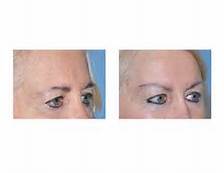One of the signs of periorbital aging, amongst many, is the descent of the outer aspect or tail of the eyebrow. This is almost always more of an aesthetic issue in women than it is in men. For some women this may be the only aspect of brow descent that is troubling. Botox injections are a good treatment for it but that is not a long-term strategy. Browlift surgery produces a more definitive result with longer lasting effects.
Different types of browlifts can be done from endoscopic to full coronal variations. The endoscopic technique is the most commonly performed browlift today. But as a trade-off for its limited use of incisions, it is prone to result in undercorrection. Specific temporal browlifts exist which involve different planes of dissection and methods of tissue fixation.
In the September 2015 issue of the Archives of Plastic Surgery, a paper on browlifts appeared entitled ‘Lateral Brow Lift: A Multi-Point Suture Fixation Technique’. In this clinical study a total of 519 patients were treated with a lateral brow surgery that essentially was a ‘dual plane’ technique. A temporal hairline incision was made with dissection along the deep temporal fascia to the superolateral bony orbital rim. Elevation of fixation of the lateral brow/orbital muscle tissues done up to the lateral edge of teh incision. Additional suture fixation was also done between the intermediate and superficial temporoparietal fascia and the deep temporal fascia. The excess temporal hair-bearing skin created by this elevation was then excised. Good ateral brow elevation was obtained in most patients (94%) with a relatively small number of complications. Total brow relapse (1.5%), partial relapse (4%), weakness of the frontal branch of the facial nerve (1%), and temporal scar widening/alopecia. (2%)

The temporal browlift technique described by this paper also involves a deep temporal plane of dissection but incorporates a periosteal release along the orbital rim. This creates greater tissue mobilization. Such tissue mobility allows for a greater elevation and expansion in the lateral canthal area. The different points of fixation of the different temporalis fascial layers to each other as well as the galea is major advantage of this technique and creates longer-lasting results.
Dr. Barry Eppley
Indianapolis, Indiana



